

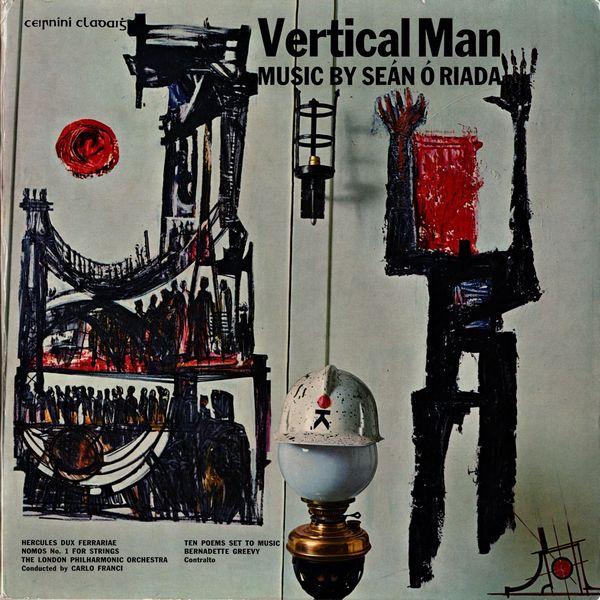
|
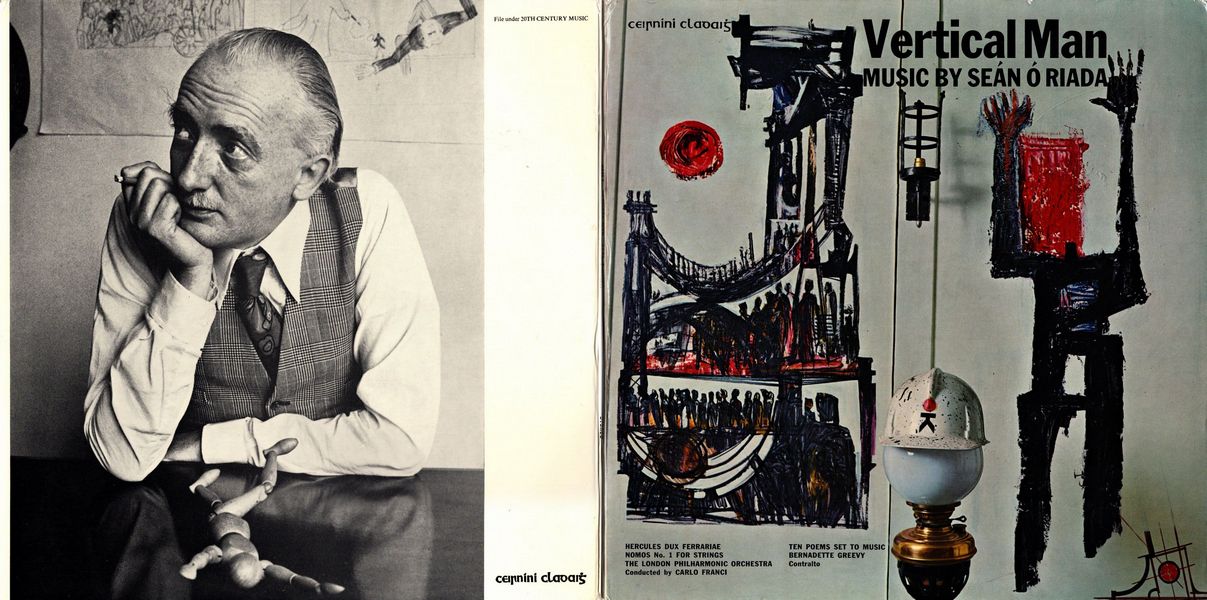
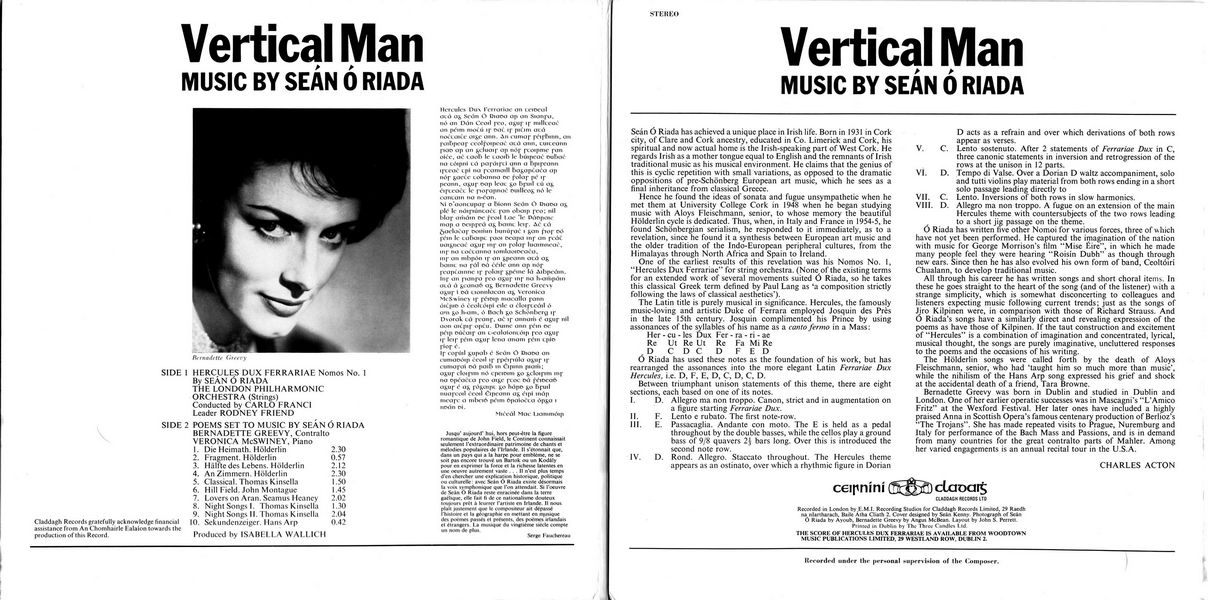 |
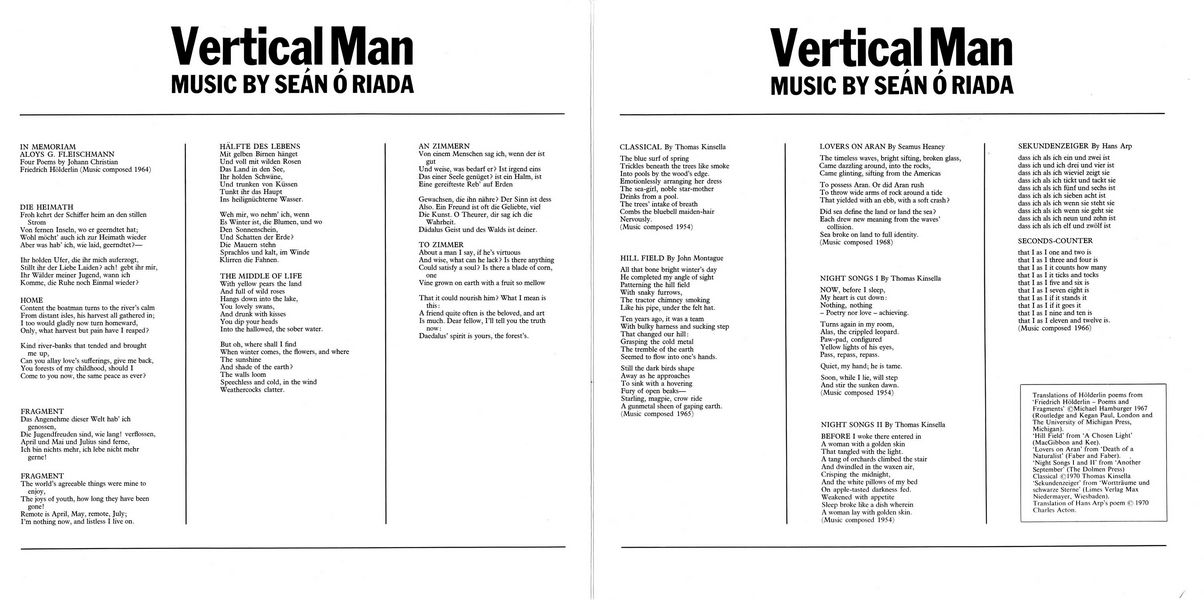
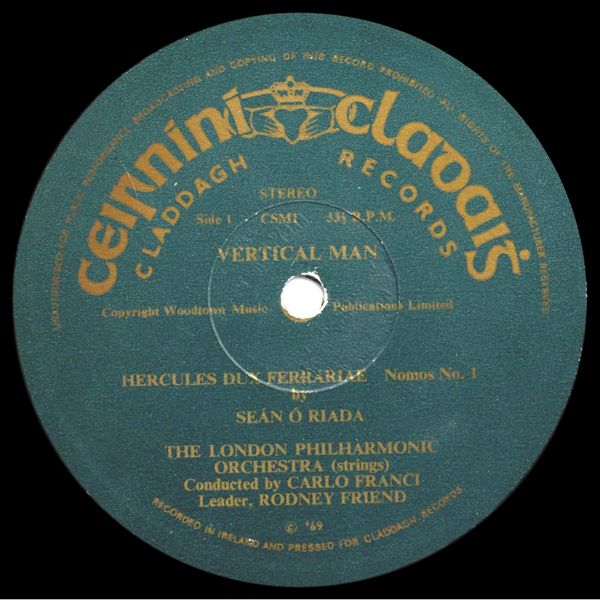
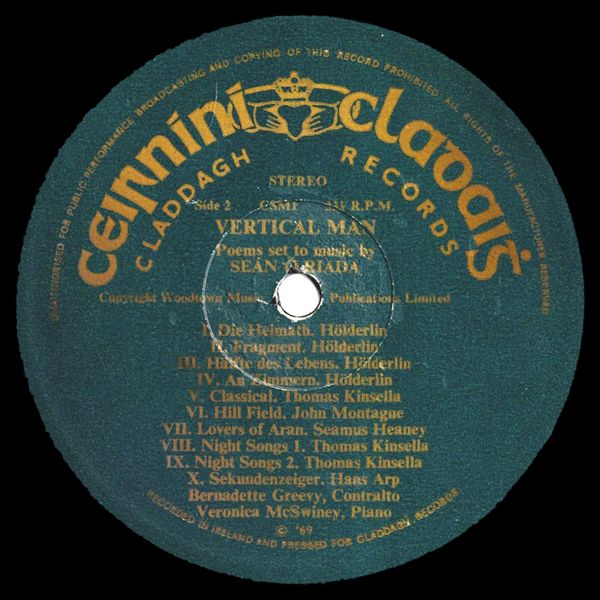 |
Sleeve Notes
Seán Ó Riada has achieved a unique place in Irish life. Born in 1931 in Cork city, of Clare and Cork ancestry, educated in Co. Limerick and Cork, his spiritual and now actual home is the Irish-speaking part of West Cork. He regards Irish as a mother tongue equal to English and the remnants of Irish traditional music as his musical environment. He claims that the genius of this is cyclic repetition with small variations, as opposed to the dramatic oppositions of pre-Schönberg European art music, which he sees as a final inheritance from classical Greece.
Hence he found the ideas of sonata and fugue unsympathetic when he met them at University College Cork in 1948 when he began studying music with Aloys Fleischmann, senior, to whose memory the beautiful Hölderlin cycle is dedicated. Thus, when, in Italy and France in 1954-5, he found Schönbergian serialism, he responded to it immediately, as to a revelation, since he found it a synthesis between European art music and the older tradition of the Indo-European peripheral cultures, from the Himalayas through North Africa and Spain to Ireland.
One of the earliest results of this revelation was his Nomos No. 1, "Hercules Dux Ferrariae" for string orchestra. (None of the existing terms for an extended work of several movements suited Ó Riada, so he takes this classical Greek term defined by Paul Lang as 'a composition strictly following the laws of classical aesthetics').
The Latin title is purely musical in significance. Hercules, the famously music-loving and artistic Duke of Ferrara employed Josquin des Pres in the late 15th century. Josquin complimented his Prince by using assonances of the syllables of his name as a canto fermo in a Mass:
Her - cu - les Dux Fer - ra - ri - ae
Re Ut Re Ut Re Fa Mi Re
D C D C D F E D
Ó Riada has used these notes as the foundation of his work, but has rearranged the assonances into the more elegant Latin Ferrariae Dux Hercules, i.e. D, F, E, D, C, D, C, D.
Between triumphant unison statements of this theme, there are eight sections, each based on one of its notes.
Ó Riada has written five other Nomoi for various forces, three of which have not yet been performed. He captured the imagination of the nation with music for George Morrison's film "Mise Éire", in which he made many people feel they were hearing "Roisín Dubh" as though through new ears. Since then he has also evolved his own form of band, Ceoltóirí Chualann, to develop traditional music.
All through his career he has written songs and short choral items. In these he goes straight to the heart of the song (and of the listener) with a strange simplicity, which is somewhat disconcerting to colleagues and listeners expecting music following current trends; just as the songs of Jiro Kilpinen were, in comparison with those of Richard Strauss. And Ó Riada's songs have a similarly direct and revealing expression of the poems as have those of Kilpinen. If the taut construction and excitement of "Hercules" is a combination of imagination and concentrated, lyrical, musical thought, the songs are purely imaginative, uncluttered responses to the poems and the occasions of his writing.
The Hölderlin songs were called forth by the death of Aloys Fleischmann, senior, who had 'taught him so much more than music', while the nihilism of the Hans Arp song expressed his grief and shock at the accidental death of a friend, Tara Browne.
Bernadette Greevy was born in Dublin and studied in Dublin and London. One of her earlier operatic successes was in Mascagni's "L'Amico Fritz" at the Wexford Festival. Her later ones have included a highly praised Anna in Scottish Opera's famous centenary production of Berlioz's "The Trojans". She has made repeated visits to Prague, Nuremburg and Italy for performance of the Bach Mass and Passions, and is in demand from many countries for the great contralto parts of Mahler. Among her varied engagements is an annual recital tour in the U.S.A.
Charles Acton